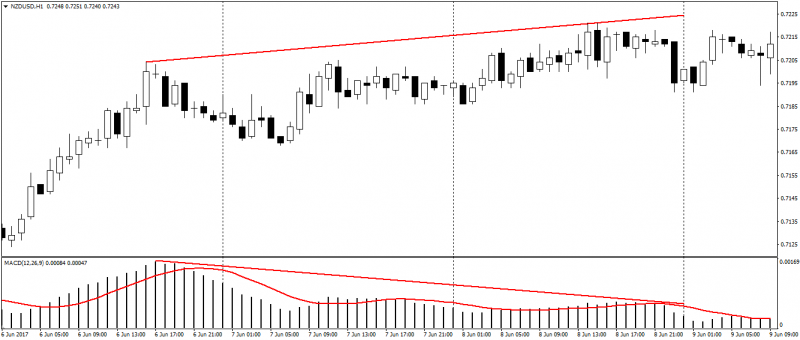
Divergence – common mistakes in trading. Anton Hanzenko.
Probably every trader has heard of the concept of oscillator divergence or oscillators: MACD and Stochastic, or other indicators from the class of oscillators. Divergence, or rather its signal, on these indicators is one of the strongest and is characterized by a high probability of testing. It allows investors to relax to some extent when working on this signal. But, alas, as elsewhere, there are exceptions that will be discussed today.
Divergence is a drawing apart. It is s bearish signal that forms in an upward market when a price forms a new high, while an oscillating indicator does not redraw this high. The signal indicates a reversal of the uptrend to the downward and is leading.
Convergence is a tend to meet at a point. It is a bullish signal that occurs in a downward market when a price forms a new low, while the oscillating indicator does not redraw this low. The signal indicates a reversal of the downtrend to the uptrend and it is a leading signal.
Further, for simplicity and to avoid confusion, divergence and convergence signals will be referred to as divergence in an upward or downward market, depending on market conditions.
The failure of divergence working can be caused by several reasons.
1. Unjustified hopes. After the first wave of growth, both highs appear on the price chart and on the oscillator. On the second wave of growth, the price updates the high, but the oscillator does not, a divergence signal arises. After the price again updates the high, and the oscillator forms a peak below the previous one. Not pleasant situation when enter for a sale. This signal continues to be a significant divergence signal even after the third and fourth peaks, but in this case, it should be understood that the working out of the divergence will not be as significant as was expected after the first two highs.

The formation of divergence is not a 100% signal of a trend reversal. You should remember it and set the appropriate goals. To avoid such a situation, it is worth using additional trend reversal signals.
2. Volatility. Excessive volatility sucha as news, statistics or statements, breaks technical analysis regardless of its strength or correctness of formation. It should be taken into account when trading and often look into the economic calendar.
3. Weak testing of divergences or signal zeroing. The market owes nothing to anyone! This is a fact with which it is difficult to argue. With the formation of a divergence, the market can go into the flat and works out this signal, sometimes it happens.
Often, traders themselves ignore the zeroing divergence. Divergence zeroing is the cancellation of a signal before it is processed. Zero divergence for MACD is the crossing of the indicator histograms through its zero line. In such cases, the divergence is considered spent regardless of the price dynamics. Zero divergence for RSI is the achievement of the oversold zone indicator line for a bearish divergence and overbought zone for a bullish divergence.
In any case, when trading on the market, you need to be attentive and look for confirmation of signals. More information about the divergence in the market and not only about it you can learn on the courses from the company Еster Holdings Inc.
Anton Hanzenko